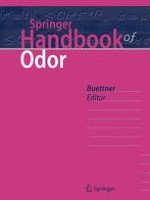2017 | OriginalPaper | Buchkapitel
30. Olfactory Subsystems
verfasst von : Marc Spehr
Erschienen in: Springer Handbook of Odor
Verlag: Springer International Publishing
Aktivieren Sie unsere intelligente Suche, um passende Fachinhalte oder Patente zu finden.
Wählen Sie Textabschnitte aus um mit Künstlicher Intelligenz passenden Patente zu finden. powered by
Markieren Sie Textabschnitte, um KI-gestützt weitere passende Inhalte zu finden. powered by
